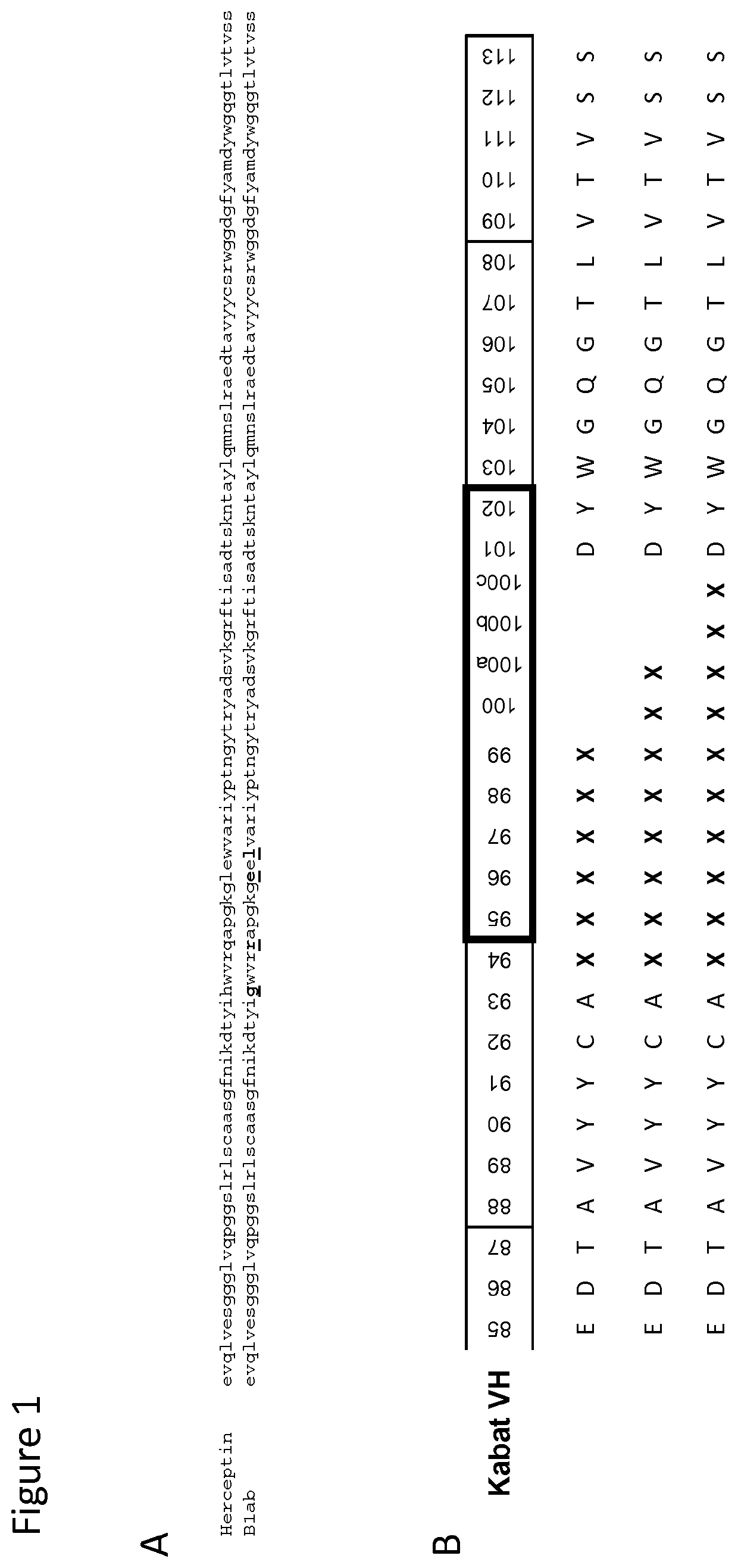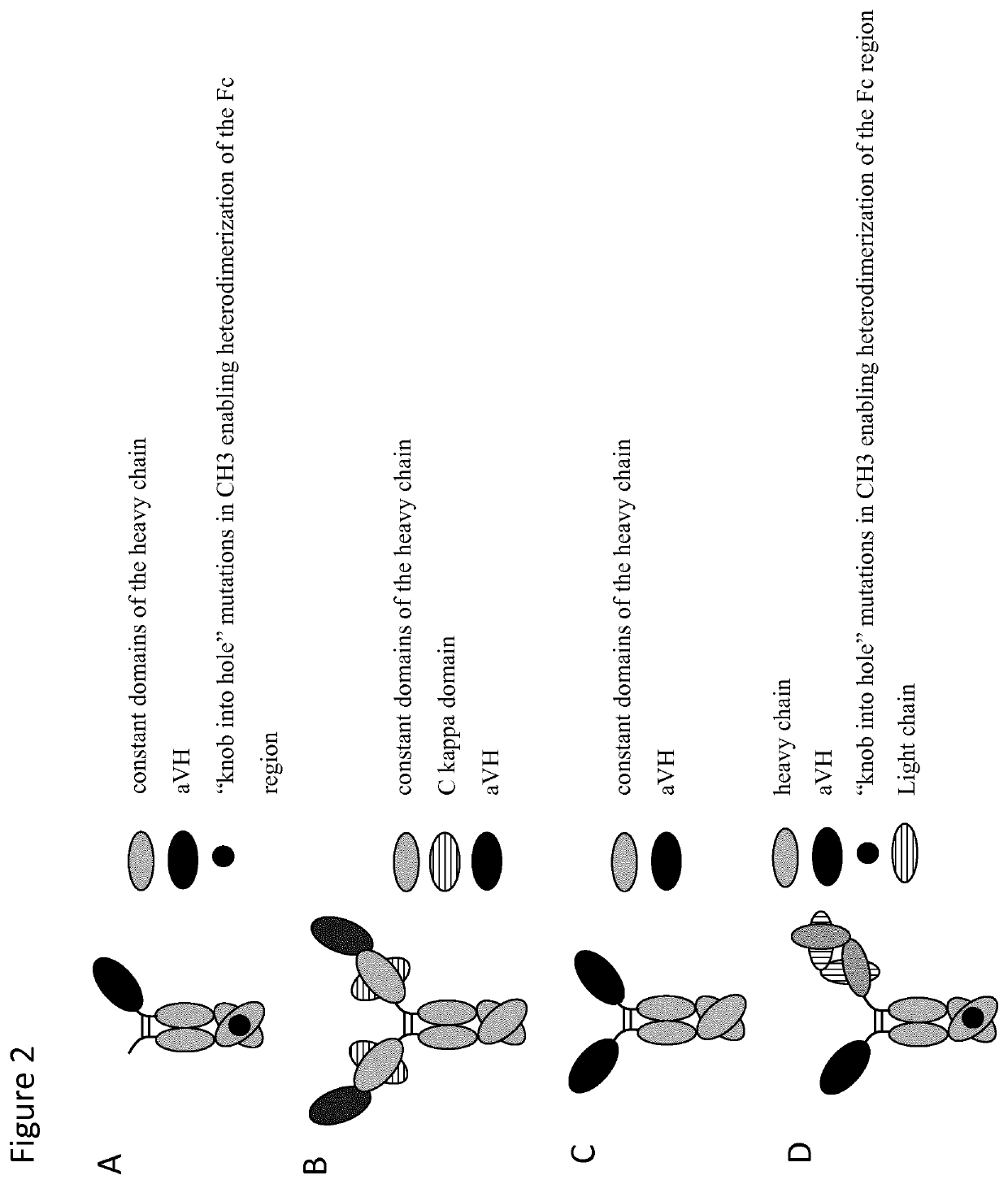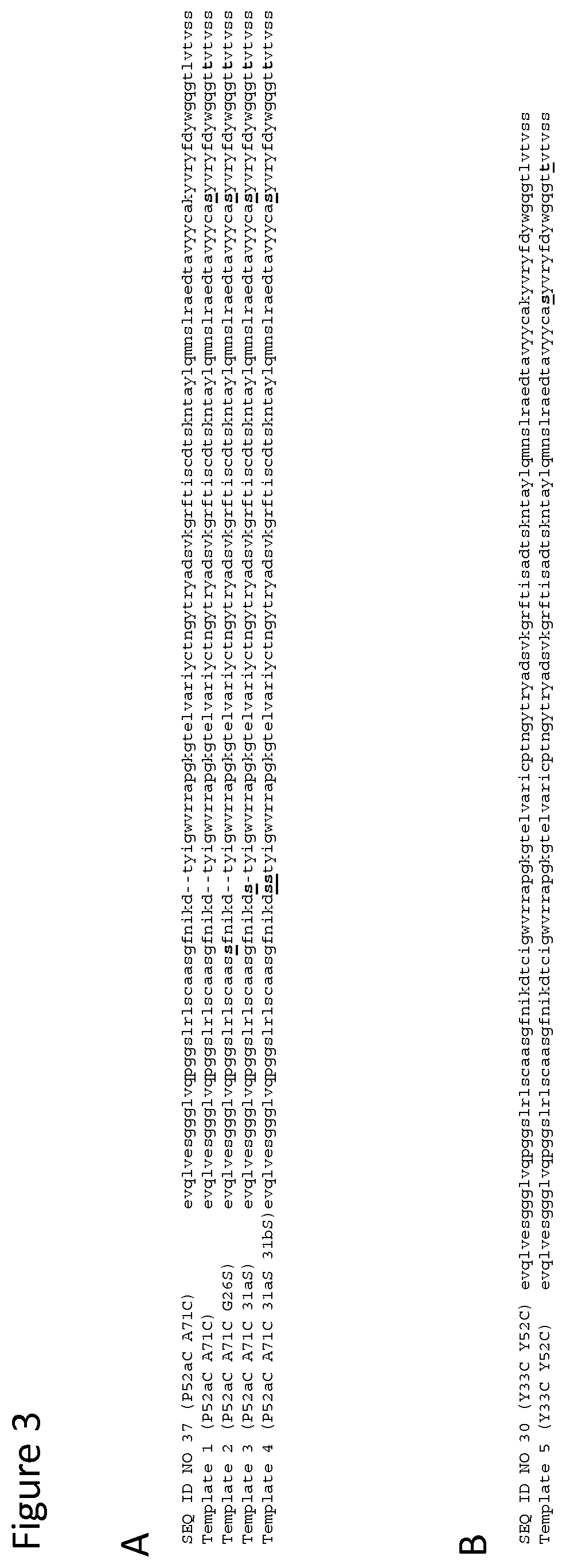Bispecific antibodies comprising an antigen-binding site binding to lag3
a technology of lag3 and specific antibodies, which is applied in the field of bispecific antibodies comprising lag3 antigen binding site, can solve the problems of single-domain antibody fragments derived from conventional human iggs, unsuitable for therapeutic applications, and prone to aggregation, and achieve the effect of prolonging the survival of a patient suffering
- Summary
- Abstract
- Description
- Claims
- Application Information
AI Technical Summary
Benefits of technology
Problems solved by technology
Method used
Image
Examples
example 1
[0209]Generation of a Generic Autonomous Human Heavy Chain Variable Domains (aVH) Library
[0210]A generic aVH library was generated on the basis of the sequence Blab, a Herceptin-derived template for autonomous human heavy chain variable domains published by Barthelemy et al., J. Biol. Chem. 2008, 283:3639-3654, (SEQ ID NOs: 13 and 14). In Blab, four 4 hydrophobic residues that become exposed to the surface in the absence of a light chain interface were replaced by more hydrophilic residues which were identified by phage display. These mutations are found to be compatible with the structure of the VH domain fold. They increase hydrophilicity and hence the stability of the scaffold and allow expression of aVH domains that are stable and soluble in the absence of a light chain partner (FIG. 1A).
[0211]For the generation of an aVH phage display library based on the sequence of Blab and randomized in the CDR3 region, 2 fragments were assembled by “splicing by overlapping extension” (SOE) ...
example 2
Identification of aVH Domains Containing a Stabilizing Disulfide Bridge
[0215]In order to further stabilize the aVH scaffold, the introduction of additional disulfides bridges constraining the flexibility of the protein chain was tested. Positions that allow the formation of a disulfide bridge when mutated to cysteines were identified either by 1) structural modeling or by 2) searching for Ig-like V-type sequences in nature that harbor additional stabilizing disulfides.
[0216]In the first approach, the crystal structure of the molecule with the closest structural homology to the used aVH was identified. (www.pdb.org, entry No. 3B9V). Using a computer algorithm, 63 pairs of amino acids with the distance of the Ca / Ca pairs below 5 Å were identified. From this 63 pairs, amino acid pairs with strong impact on core packing or obvious violations of the CP / Co geometry were excluded. As a result, 8 different pairs of residues were selected
[0217]In the second approach, a manual database screen...
example 3
[0219]New library templates for the generation of stabilized generic autonomous human heavy chain variable domain (aVH) libraries
[0220]Based on the SEQ ID NOs 30 and 37, new aVH library templates were designed for the generation of aVH libraries with higher stability. The following optional modifications were made in the template sequences (1) introduction of the mutation K94S. (2) Introduction of the mutation L108T, a frequent sequence variant found in the antibody J-element. However, the aforementioned mutations had no specific effect. An overview on all library templates is given in FIG. 3.
Generation of New Generic Autonomous Human Heavy Chain Variable Domain (aVH) Libraries Harboring the Stabilizing Disulfide Bridge 52a / 71
[0221]For the generation of new aVH libraries based on the additional stabilizing disulfide bridge at positions 52a and 71, four new templates were designed (SEQ ID NOs: 39, 41, 43, 45). Three out of the four templates harbor additional sequence modifications i...
PUM
| Property | Measurement | Unit |
|---|---|---|
| Fraction | aaaaa | aaaaa |
| Temperature | aaaaa | aaaaa |
| Temperature | aaaaa | aaaaa |
Abstract
Description
Claims
Application Information
 Login to View More
Login to View More - R&D
- Intellectual Property
- Life Sciences
- Materials
- Tech Scout
- Unparalleled Data Quality
- Higher Quality Content
- 60% Fewer Hallucinations
Browse by: Latest US Patents, China's latest patents, Technical Efficacy Thesaurus, Application Domain, Technology Topic, Popular Technical Reports.
© 2025 PatSnap. All rights reserved.Legal|Privacy policy|Modern Slavery Act Transparency Statement|Sitemap|About US| Contact US: help@patsnap.com



